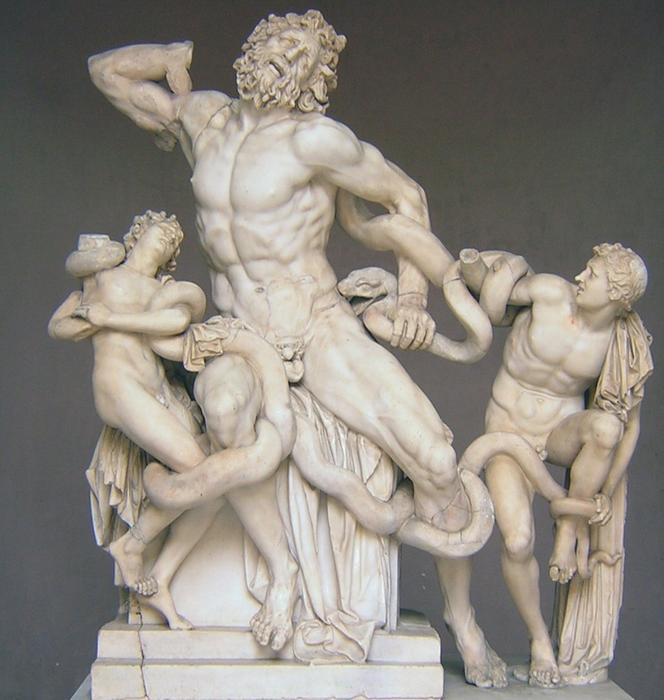Pick up the white man’s burden…
Today’s lesson is ‘old habit die hard’.
This afternoon I had lunch with my old friend Peter Klein, who I have not seen in years.
Peter was a producer for 60 Minutes, and still does pieces for them, although now he has moved to Vancouver and is teaching at the University there. In fact, he just got tenure.
We started talking about how hard it is for institutions like CBS News to change, and that led me to thinking about the Laocoon (seen above).
The statue is in the Vatican Museum in Rome, and is attributed to Pliny the Elder.
The reason it made me think of the Laocoon is the pure white marble that we have come to associate with Roman sculpture. This, we all agree, is the way ancient sculpture is supposed to look.
The reason we think that is because the first big caches of Roman sculpture were retrieved from Pompeii and Herculanium in 1738 by workmen digging the foundations for a palace for the King of Naples, Charles of Bourbon. The intense heat of the volcanic ash at Pompeii and particularly at Herculanium scorched the statuary to a bright white. So that is how we thought of ancient statues.
In fact, nothing could be further from the truth. The ancients love to paint their statutes (and their buildings for that matter) in bright garish colors.

Shocking but true.
They also liked put wigs, eyelashes and other stuff on their statues.
It sort of offends our sensibilities.
Even if its the truth.
This is not how we think of Roman and Greek statues.
There’s a very interesting article on this at io109.com.
Even the very white and formal Acropolis looked more like Venice Beach, California.

The more garish, the better, in the eyes of the ancient Greeks.
This was and remains to many people very unnerving.
Ancient statues from the Greeks and Romans (and buildings for that matter) are supposed to be white and pure and pristine Not like these!
The truth of paint on ancient statutes was so upsetting that for many years thereafter, archaeologists and museums would, in fact, scrub off any traces of paint or pigmentation that they found on ancient statues.
All of which brings me back to Peter Klein and CBS News.
The way we are first introduced to things is how we tend to want to see them forever. Anything else seems ‘wrong’.
The US news networks got used to working in a certain way.
They were comfortable with that.
And now, even when they know, intellectually, that they have to change, that their way of working no longer conforms to the ‘truth’ of the way the world now is, they just cannot bring themselves to change.
Laocoon was killed when he attempted to warn the people of Troy about the danger of the Trojan Horse. Athena sent snakes to kill him.
Which is what you get when you try and tell a network executive about how they run their business and what they have to do to survive.
Snakes.
